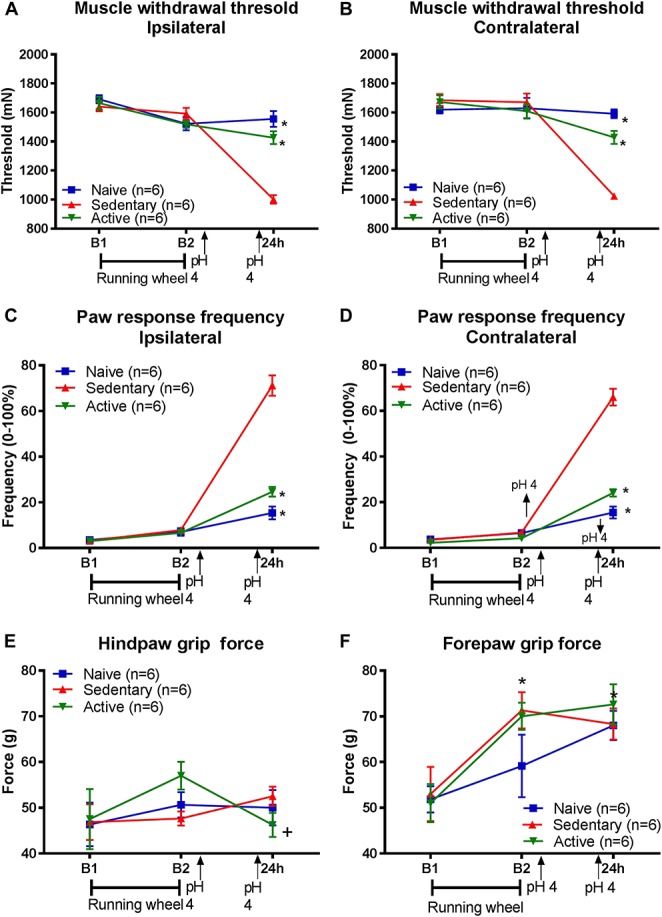Figure 1.

Long-term running wheel activity prevents development of hyperalgesia produced by repeated acid injections. Graphs show the muscle withdrawal threshold (A and B), paw response frequency (C and D), and grip force (E and F) before (B1) and after 8 weeks of running wheel (B2), and 24 hours after the second injection of acidic saline for naive (blue), sedentary (red), and running wheel (active, green) groups. The withdrawal threshold and paw response frequency were significantly lower in sedentary animals after the second acid injection when compared with the naive or physically active groups bilaterally (*P < 0.05). The hind paw grip force was significantly greater in the active group compared with the naive group for the forepaw and significantly less after the second acidic saline injection for the active group (*, P < 0.05) compared with the time after running wheel (+, P < 0.05). Data are the mean ± SEM.
